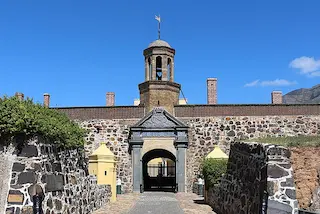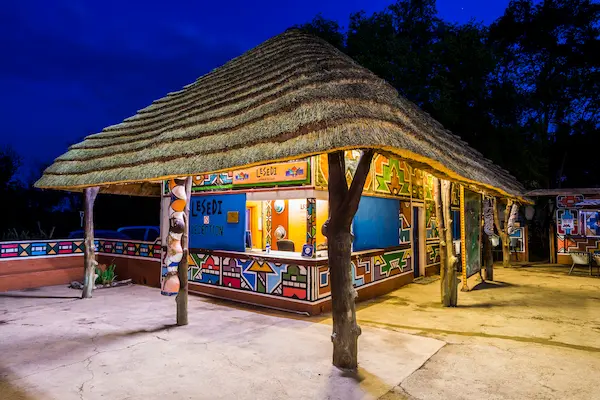Exploring South Africa's Architectural Heritage: A Journey Through Time and Styles

South Africa's architecture is a vibrant reflection of its diverse climate, cultural richness, and economic disparities, making it a fascinating study for anyone interested in architectural styles and history.
The Castle of Good Hope, located in Cape Town and built in 1666, holds the title of South Africa's oldest existing structure. However, archaeological discoveries in Limpopo Province and Mpumalanga have revealed significant stone ruins that predate the white settlement at the Cape. Among these, Mapungubwe Hill stands out. This site, located at the junction of the Limpopo and Shashi rivers, was the heart of a gold-mining civilization that traded with coastal Swahili ports like Sofala around 950 AD. Its architectural peak was reached with the construction of Great Zimbabwe around 1300 AD.
The Cape Dutch style, developed by the 17th-century settlers of the Cape, is a unique architectural style that emerged in response to local climate and material availability. Early Cape Dutch houses, often T-shaped, featured pitched thatched roofs, decorative gables, whitewashed walls, and symmetrical facades with shuttered rectangular windows. Groot Constantia near Cape Town, built for Dutch governor Simon van der Stel in 1685, is a prime example of this style.
Cape Town is also home to several other historic buildings, including the Tuynhuys, built in 1700, and now used as the State President's office and residence, the Old Slave Lodge (now the South African Cultural History Museum), the Old Town House on Greenmarket Square, and the South African Library.
The Bo-Kaap, Cape Town's Malay Quarter, houses the oldest surviving examples of a new house type that emerged after a devastating fire in 1736 discouraged thatching. These simple one-storey buildings were originally home to fishermen, labourers, and tradesmen who had come to the Cape as slaves.
The Karoo house, a derivative of the Cape Dutch vernacular, evolved in the harsh, arid interior as European settlement expanded northwards. In the Northern Cape, early 18th-century Boer settlers responded to the scarcity of wood by building hut-like structures of corbelled stone, some of which survive in the towns of Williston and Carnarvon.
The British influence is evident in the architecture of the Eastern Cape, where British settlers arrived in the 1820s. A vernacular architecture soon developed around Grahamstown, blending the building traditions of the Cape with those of the settlers. In Port Elizabeth, the British influence is seen in terraced houses with elegant Georgian and Regency verandas.
The cities of Durban and Pietermaritzburg also have a pronounced British architectural character. Pietermaritzburg, in particular, is famous for its Victorian salmon-coloured brick buildings with corrugated-iron roofs and pretty filigreed verandas.
In the late 19th century, the economic impact of the growing mining industry resulted in a remarkable building boom, epitomised by Durban's City Hall, built in 1884 by Philip Dudgeon in a Classical style. Durban's architectural uniqueness stems from the local Asian population, with well-preserved Hindu temples scattered throughout the Asian districts and the gigantic Grey Street mosque in the city centre.
Gauteng, South Africa's third major urban centre, is home to Johannesburg, a cosmopolitan industrial centre, and Pretoria, a smaller, more provincial city crowned by Herbert Baker's majestic Union Buildings (1912). Both cities have fine examples of the architecture of the Modernist movement, marking a new period in South African architectural history.




